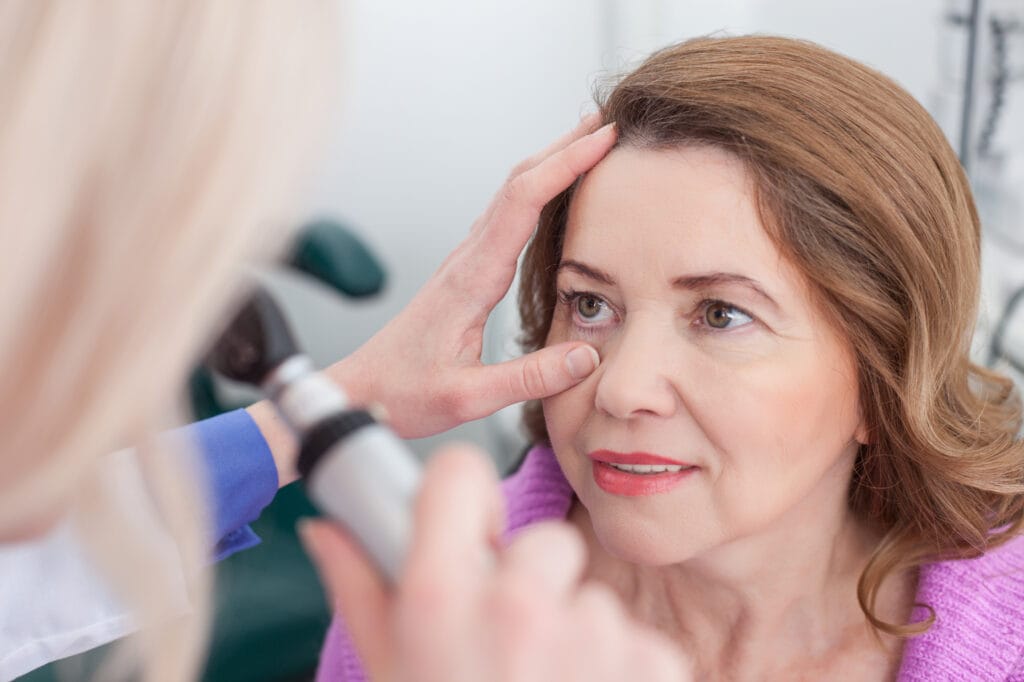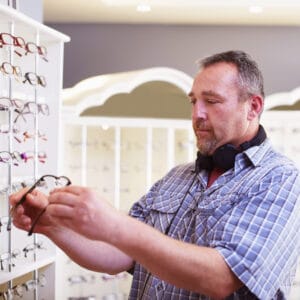May 15, 2023
I previously explored what the booming market for over-the-counter (OTC) readers can mean for your practice. I followed that with some of the results of a survey about OTC readers. Here is the remainder of that survey, which asked eye care professionals to share their insights and experience with presbyopes and their lens designs:
Survey Examines Age and Gender Differences
A survey was sent to 100 practitioners. A total of 78 practices responded to the following questions [numbers below continue from first half of survey]:
6. At what age do your patients typically present for help with presbyopia? Give one age only.
7. Do you treat early male presbyopia differently from early female presbyopia?
9. Where do you get information on new lens designs? List up to three.
A. Sales reps
B. Journal articles
C. Journal ads
D. Internet ads
E. Presentations at meetings
10. Do you think lens design specialists (industry employees) should be able to present at meetings for CE credit? Yes or No?
Average Age Patients Seek Help is 47
Question number six asked at what age patients typically present for help with presbyopia. ECP respondents gave a narrow range of numbers, from 44 to 51. The average age was 47.2 years. I personally started needing help with near point tasks on a regular basis at 47. (I was an emmetrope up to that time with no need for a distant Rx). It appears that the typical patient didn’t go to their ECP upon the very earliest signs of presbyopia but only after the need was fairly constant.
The question about whether males and females are treated differently comes from my own personal experience. In my practice, females were less likely to request help during the early stages of presbyopia, while males tended to be bothered on earlier onset.
About one-third of responding doctors (27) did mention something related to the fact that early male presbyopes were more often concerned about the price of lens designs than were females. While progressive designs were the overwhelming choice of all patients, more males selected flat-top designs than females.
Sales Reps Top Source for New Lens Information
I found question number nine, which asked where respondents get information on new lens designs, the most interesting. Survey respondents were very forthcoming about their answers. Sales reps for the various lens and lab companies were the number one source of new lens designs for the doctors. From my own experience, my lens/lab sales rep frequently visited our practice and often held lunch-and-learn presentations explaining various lens designs and advantages. This was by far the best way for me to learn about the new technology used for designing and manufacturing modern spectacle lenses. It also gave our practice a great face-to-face method for discussing any lab problems we might be encountering.
During the earlier years of our practice we used one particular brand of lenses and never saw a sales rep even once in a period of over ten years. After that, we had another lab and lens manufacturer call on us. So, we decided to take a chance on the new company. It didn’t take long for us to change all of our orders to the new company. We had been taken for granted for far too long. We’ve continued this relationship and maintain a strong relationship with our lab. I believe this relationship is an important part of any optometric practice.
Journal advertisements were the next most frequent way doctors learned about new lens designs. As I continue to keep up with the trade press available today, I still see many informative, explanatory ads about new lens designs.
The survey showed that journal articles were the third source for new lens information. Presentations at meetings were a distant fourth, while internet ads only sparingly were cited as an information source.
Majority Okay with CE Credit
Of the 78 practices that answered the question about industry employees presenting at CE meetings, 72 were overwhelmingly in support of it. There are very few optometrists who have the detailed understanding of modern lens design techniques who could competently present this information at a meeting. I have been fortunate enough to have had the opportunity to hear knowledgeable speakers from different lens companies who have made it possible for me to understand the technology of freeform lens design so I could select appropriate lenses for my patients.
Having been in charge of continuing education for SECO, AOA’s Optometry’s Meeting, and the Vision Expo programs over the years, I have always been opposed to COPE’s policy of not giving credit to education delivered by corporate employees. I understand the need to police the potential for bias in presentations, but who better to explain the technical aspects of a new lens design, pharmaceutical drug, or a new surgical tool or technique than the inventors themselves. A perfect example of this was Dr. Ralph Stone, a chemistry and pharmaceutical expert who worked for many years with Alcon, and who over the years I had the privilege of hearing on several occasions speak about new chemical interactions with drugs. I never sensed he gave biased information.
On the other hand, I also remember launches of potent fourth-generation fluroquinolones, in which case audiences had to be good listeners because bias was occasionally present in non-CE industry presentations.
Other excellent examples of non-bias presentations were given by Dr. Jim Thimons on two consecutive mornings at SECO breakfast series meetings. Dr. Thimons presented on behalf of Allergan one morning and Alcon the next morning. Both presentations were about similar glaucoma medications, and both were presented in a non-biased manner. Dr. Thimons continues to be a popular speaker at optometric educational events.
Educated doctors should be able to sort through bias in technical presentations, so they should have the opportunity to hear industry experts who could be beneficial to their patients. A final example of industry information presented in a non-biased manner was a lecture I heard by Pete Hanlin, an optician with EssilorLuxottica. He lectured on sunburn, SPF, and ocular protection from the sun. The presentation never mentioned a brand name but was brilliant on the topic of the sun’s rays and how they affect the skin and eyes. It is a shame he can’t present this at an educational for-credit event.
That’s the ECPs take on some specific aspects of presbyopia as they weigh in via my survey.





